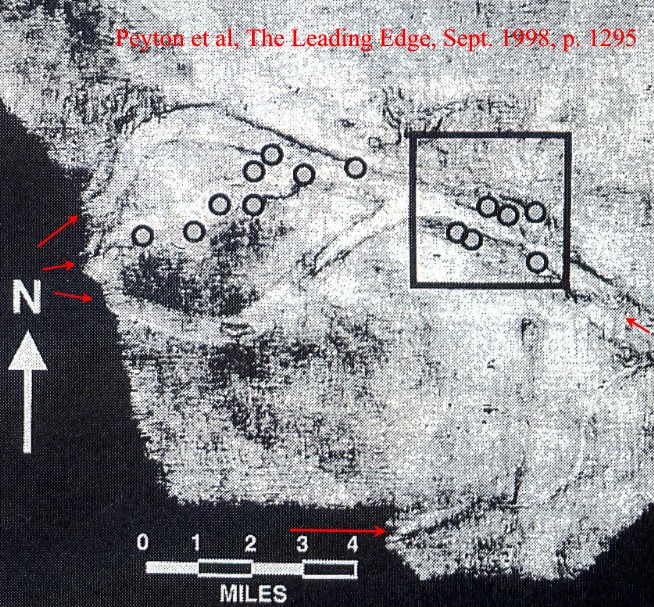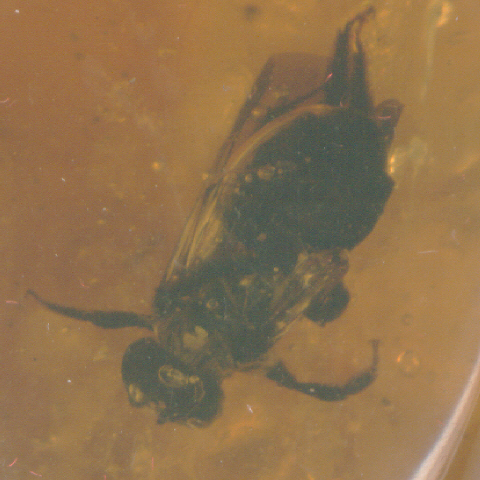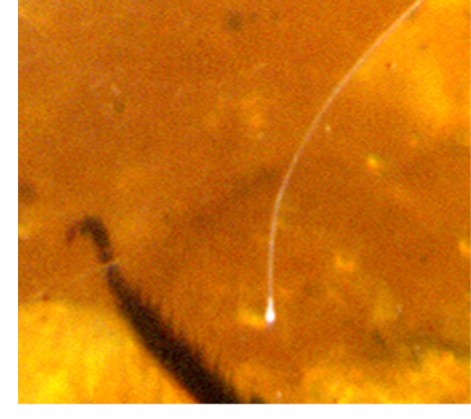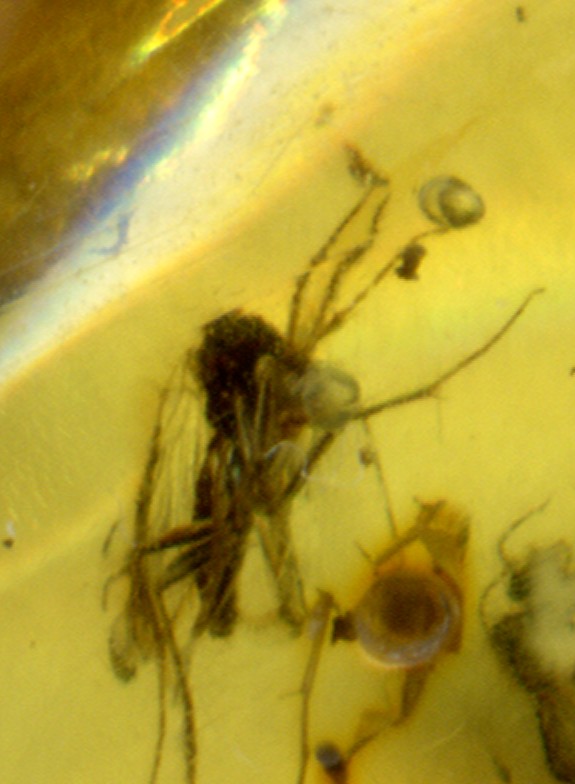Creation Science Articles
Amber and the Flood
Copyright 2004 G.R. Morton. This can be freely distributed so long as no changes are made and no charges are made.
Amber has fascinated mankind for at least 10,000 years. Amber is the fossilized resin of pine trees and its existence presents problems for the young-earth view point.
Much of the following is taken from http://www.gplatt.demon.co.uk/baltic.htm
Lets start with why we think amber is fossilized resin. Amber contains a chemical called succinic acid. Most pine trees have resin which lacks succinic acid and that has caused some to doubt whether or not the amber is from fossilized trees. But recently two genera of pines have been found which have resin containing succinic acid. These are Keteleeria and Pseudolarix. Today, Pseudolarix is found in forests of eastern China. But its connection with amber comes from the discovery of Pseudolarix pine cones in amber on Axel Heidelberg Island in northern Canada, and it contains succinic acid.
Ninety percent of the Baltic Amber production comes from the southwestern part of the Baltic sea. A 1280 sq. km area produces most of the amber from a bed called Blue Earth. When storms rage in the Baltic, currents stir up the sea floor, and amber floats to the surface and then drifts to the beaches where it is picked up.
The amber collected in this region because there was a huge pre-glacial forest covering Scandinavia with trees, probably of the Pseudolarix genus. When the resin oozed out of the tree, some insects, tree parts etc were trapped and covered with the resin. The soft resin was then washed down two rivers, the Alnarp and the Eridanos. These rivers no longer exist, but like the river channels I have shown in the geologic column (see pic below for an example from Oklahoma at 10,000 feet down), one can trace the course of these rivers in the geologic column.

The river deltas were in what is now the SE Baltic and NE Poland and it is there that they deposited the soft resin on the bottom of the sea. It is from this that a very few marine fossils were covered in the soft resin and then turned into amber with burial and time.
Below is a bee from my personal collection.

The preservation is great. Notice the hair on the leg of this bee.

Here are two other insects the first is a small wasp the second looks like a mosquito from my collection. The 2nd pic is a bit fuzzy but it is the best I could do.
And I have an nematoceran fly in Baltic Amber. (originally I mis- identified this as a spider. Mark Isaac pointed out my error. Thanks.

The issues raised by amber insects for the global flood advocates are these.
- Amber is not found in any rocks earlier than the Carboniferous (1 ancient unsubstantiated report-J. Smith Trans. Geol. Soc. Glasgow, 1894). This is strange since according to the global flood view, resin generating trees should have been on earth in the pre-flood world.
- Amber is only found in deposits of the later parts of the global flood. How did the trees grow and ooze resin during the later stages of the flood and why didn't they do it earlier? Even if we have the upper parts of the geologic column as a recolonisation model, it still leaves unanswered why there is no amber from the pre-flood world which would land it in the Cambrian?
- Amber fossils take time to form. The tree must ooze the resin, the insect must subsequently become entrapped in the resin, the now fossiliferous but still soft resin must be transported to the river delta to be buried. And then there is time required for the resin to turn into amber.
- The rivers of that age which are detectable in the geologic column, also would take time. How could this happen during a period when 50-100 feet per day of sediment was being dumped on the floor of the global flood ocean?
- This argument is from a friend named SedRocks on TheologyWeb, who pointed out that someone Eocene insects end up in Eocene amber, Oligocene insects end up in Oligocene amber and Miocene insects end up in Miocene amber. The question he raises is how does the global flood sort the similar sized bobs of amber according to the insects contained within it? That is a question no young-earther tried to answer.
The YEC explanation simply falls flat on its face. It has no explanatory power at all. Unless of course, some YEC wishes to explain the data.
Visit Old Earth Ministries on Facebook
Did you know that you can be a Christian,
and believe that the earth is billions of years old? The
author of this article, Glenn Morton, made the transition from young
earth creationism to old earth creationism. To learn more
about old earth creationism, see
Old Earth Belief,
or check out the article
Can You Be A
Christian and Believe in an Old Earth?
Feel free to check out more of this website. Our goal is to
provide rebuttals to the bad science behind young earth creationism,
and honor God by properly presenting His creation.
